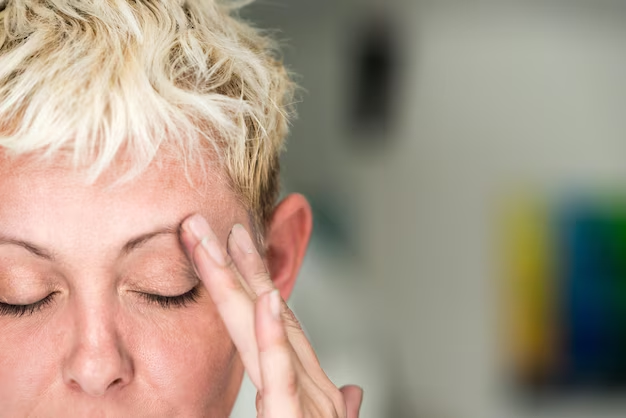Can Cataracts Lead to Dry Eyes? Understanding the Connection
If you're wondering about the relationship between cataracts and dry eyes, you're not alone. These eye conditions are more common as people age, and understanding whether one can cause or exacerbate the other is a concern for many. In this comprehensive guide, we'll delve into the nuances of cataracts and dry eyes, their symptoms, their causes, and potential connections between the two. We'll also provide practical tips for managing these conditions, so you can take informed steps toward maintaining optimal eye health.
🤔 What Are Cataracts and Dry Eyes?
Understanding Cataracts
Cataracts are a common eye condition where the lens of the eye becomes clouded, leading to vision impairment. They typically develop slowly and can affect one or both eyes. Cataracts are a leading cause of blindness worldwide but are treatable through surgical procedures.
Key Symptoms of Cataracts Include:
- Blurred or cloudy vision
- Difficulty seeing at night
- Sensitivity to light and glare
- Seeing halos around lights
- Fading or yellowing of colors
- Double vision in a single eye
Exploring Dry Eyes
Dry eye syndrome, on the other hand, occurs when your eyes do not produce enough tears or the quality of tears is poor. Tears are essential for maintaining eye health and clear vision by lubricating the eyes and removing debris.
Common Signs of Dry Eyes:
- Itchiness or irritation
- A stinging or burning sensation
- Redness
- A sensation of having something in your eye
- Blurry vision
- Excessive tearing (as a reflex response to dryness)
🔍 Investigating the Connection: Do Cataracts Cause Dry Eyes?
Cataracts and Dry Eyes: A Direct Link?
While cataracts themselves do not directly cause dry eyes, people with cataracts often experience both conditions simultaneously. This overlap can be due to several factors, primarily related to age and other underlying health conditions.
Age: The Common Denominator
Both cataracts and dry eyes are primarily age-related conditions. As we age, changes in the body's ability to produce moisture, such as tears, become more prevalent. Similarly, the proteins in the lens of the eye can start to clump together, forming cataracts. Thus, while one condition does not cause the other, both may manifest around the same time in life due to aging.
Surgical Intervention and Dry Eyes
If you undergo cataract surgery, you might initially experience symptoms of dry eyes after the procedure. This occurs because the surgery can temporarily affect tear production and tear film stability. However, these symptoms often resolve with time and appropriate management.
🌿 Managing and Treating Cataracts and Dry Eyes
Managing Cataracts
Cataract Management Includes:
- Regular Eye Check-ups: It's vital to have regular eye exams to monitor the progression of cataracts and maintain overall eye health.
- Surgical Options: Cataract surgery is a common and effective treatment, where the clouded lens is replaced with a clear artificial lens.
Treating Dry Eyes
Dry Eye Treatments Involve:
- Artificial Tears: Use over-the-counter artificial tears to lubricate the eyes.
- Prescription Medications: In some cases, doctors may prescribe eye drops to increase tear production.
- Lifestyle Adjustments: Reduce screen time, use humidifiers, and stay hydrated to promote tear production naturally.
Holistic Tips for Eye Health
- Healthy Diet: Incorporate omega-3 fatty acids, vitamins A, C, and E, which can support overall eye health.
- Regular Hydration: Drink plenty of water to ensure adequate moisture levels in your body, including your eyes.
- Protective Eyewear: Wear sunglasses with UV protection to shield your eyes from harmful rays that can exacerbate both cataracts and dry eyes.
🌟 Key Takeaways: Practical Tips for Eye Health
To help you manage your eye health effectively, here's a concise summary with practical tips:
- 🕵️♀️ Regular Check-ups: Schedule regular eye exams, especially if you're over 40.
- 🥦 Nutrient-Rich Diet: Incorporate foods rich in vitamins and omega-3 fatty acids.
- 💧 Stay Hydrated: Drink at least 8 glasses of water per day.
- 🌞 UV Protection: Wear sunglasses outdoors to prevent UV damage.
- 🏠 Humidity Control: Use a humidifier at home to maintain eye moisture levels.
- 👀 Limit Screen Time: Take breaks during long hours of screen use to avoid strain.
Closing Insight
While cataracts and dry eyes don't cause each other, they frequently coincide, primarily due to aging. Understanding their symptoms, causes, and management strategies can significantly contribute to maintaining your eye health. Being proactive about regular eye exams, surgical options, and lifestyle adjustments can create a comprehensive approach to managing both conditions effectively.
Ultimately, staying informed about your eye health and knowing when to seek professional advice are crucial steps. Remember, clear vision starts with a proactive approach to overall eye care!
